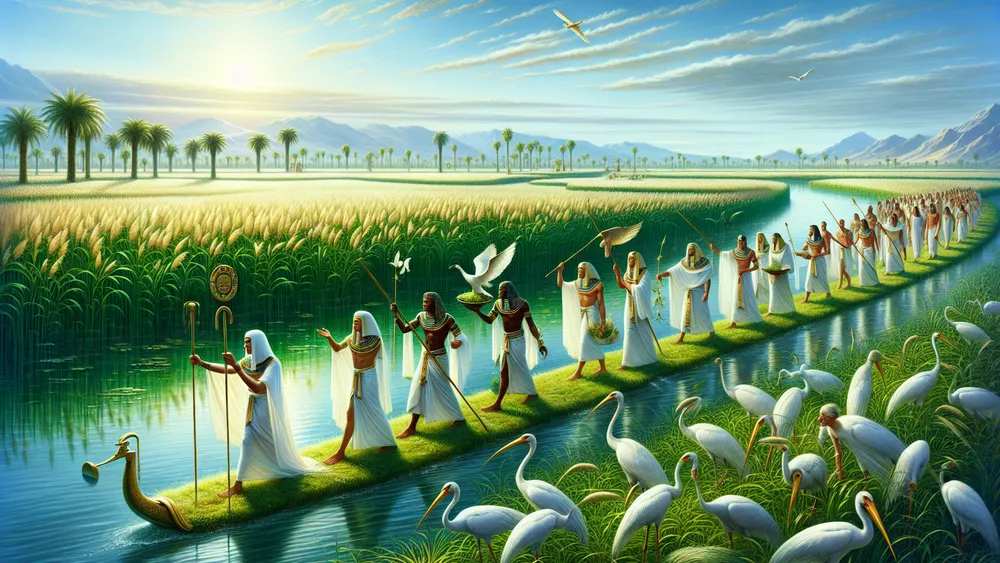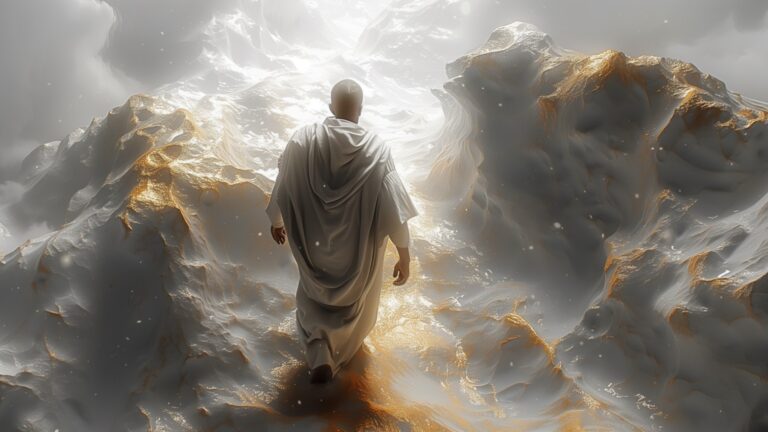Uplifting Myths of Life After Death

Uplifting Myths of Life After Death
Divine Destinies: Uplifting Myths of Life After Death
Introduction
The concept of life after death has always been a cornerstone of human belief systems, offering comfort and hope in the face of mortality. Myths about the afterlife not only address existential questions but also reflect the values, ethics, and aspirations of different cultures. This article explores uplifting myths of life after death, examining how various traditions envision a transcendent journey and ultimate destiny that inspire and elevate the human spirit.
Ancient Egypt: The Journey to the Field of Reeds

In ancient Egyptian mythology, death was not the end but the beginning of a journey to an eternal paradise known as the Field of Reeds. This realm mirrored the ideal version of Egypt, where the deceased could enjoy the same pleasures and activities they cherished in life, but in a perfected state. Uplifting Myths of Life After Death
The journey to the Field of Reeds was fraught with challenges, requiring the deceased to navigate the underworld (Duat) and face a series of trials. Central to this journey was the “Weighing of the Heart” ceremony, where the heart of the deceased was weighed against the feather of Ma’at, the goddess of truth and justice. If the heart was lighter than the feather, the soul was deemed righteous and granted entry into the Field of Reeds. If heavier, the soul faced obliteration by the devourer Ammit.
This belief system emphasized moral integrity and the hope of a blissful afterlife, portraying death as a transition to a life of eternal harmony and fulfillment.
Greek Mythology: The Elysian Fields

In Greek mythology, the afterlife was a complex realm with different destinations for souls based on their earthly deeds. Among these, the Elysian Fields stood out as a paradise reserved for heroes, virtuous individuals, and those favored by the gods.
Elysium was depicted as a place of eternal spring, where souls lived in perfect happiness, free from toil and sorrow. It was a land of green meadows, gentle breezes, and perpetual daylight, where the blessed could engage in their favorite pursuits and enjoy the company of other noble souls. Uplifting Myths of Life After Death
This vision of the afterlife highlighted the Greek values of heroism, honor, and the pursuit of excellence. The promise of Elysium provided a powerful incentive for leading a virtuous and courageous life.
Hinduism: The Cycle of Rebirth and Moksha

Hinduism offers a deeply philosophical view of the afterlife, centered around the concepts of karma (action) and samsara (the cycle of rebirth). According to Hindu belief, the soul (atman) undergoes a series of births and deaths, influenced by one’s actions in previous lives. The ultimate goal is to achieve moksha, or liberation, which is the release from the cycle of rebirth and union with the divine. Uplifting Myths of Life After Death
Moksha is often described as a state of infinite bliss and eternal peace, where the soul merges with Brahman, the ultimate reality. This state transcends all earthly pleasures and pains, representing the highest form of spiritual fulfillment.
The journey toward moksha involves ethical living, spiritual practice, and devotion to the divine. Hinduism’s uplifting vision of the afterlife emphasizes personal growth, the accumulation of good karma, and the realization of one’s divine nature.
Buddhism: Nirvana and the Bardo

Buddhism, which emerged from the spiritual milieu of ancient India, presents a unique perspective on life after death. The ultimate aim in Buddhism is to attain nirvana, a state of liberation from the cycle of birth, death, and rebirth (samsara).
Nirvana is described as a state of perfect peace, free from suffering, desire, and ignorance. It represents the cessation of all karmic cycles and the realization of ultimate truth. Achieving nirvana involves following the Noble Eightfold Path, which includes right understanding, right intention, and right conduct, among other practices. Uplifting Myths of Life After Death
Upon death, the soul enters a transitional state known as the bardo, where it experiences various visions and encounters that reflect its karma. The experiences in the bardo can influence the soul’s next rebirth or lead to the attainment of nirvana.
Buddhism’s uplifting myth of the afterlife underscores the potential for spiritual awakening and the transformative power of wisdom and compassion. Uplifting Myths of Life After Death
Christianity: Heaven and the Beatific Vision

In Christian theology, Heaven is depicted as the eternal dwelling place of God and the ultimate destination for the righteous. It is a realm of unimaginable joy, peace, and communion with the divine.
The Beatific Vision, the direct encounter with God, is considered the highest form of happiness and fulfillment in Heaven. Christians believe that in Heaven, they will experience perfect love, unity with God, and the company of angels and saints.
The New Testament describes Heaven as a place with streets of gold, gates of pearl, and an absence of pain, sorrow, and death. The hope of Heaven provides Christians with a powerful incentive to live according to their faith and the teachings of Jesus Christ. Uplifting Myths of Life After Death
Islam: Jannah and Eternal Bliss

In Islamic tradition, the afterlife is divided into Jannah (paradise) and Jahannam (hell). Jannah is a place of eternal bliss, reserved for those who have lived righteous lives and followed the teachings of Islam.
The Quran provides vivid descriptions of Jannah, depicting it as a lush, verdant paradise with flowing rivers, abundant fruit, and luxurious comforts. Inhabitants of Jannah enjoy physical and spiritual pleasures, including the company of loved ones and the ultimate reward of seeing Allah.
The promise of Jannah emphasizes the importance of faith, ethical conduct, and devotion to God. It offers Muslims a vision of an afterlife filled with peace, happiness, and divine presence. Uplifting Myths of Life After Death
Indigenous Beliefs: Ancestral Spirits and the Spirit World

Many indigenous cultures around the world have their own unique beliefs about the afterlife, often centered around the idea of a spirit world where ancestral spirits reside.
For example, Native American tribes such as the Lakota and Hopi believe in a spirit world where the souls of the deceased join their ancestors and continue to influence the living. This belief emphasizes the interconnectedness of all life and the enduring presence of the ancestors in guiding and protecting their descendants.
Similarly, in many African traditions, the afterlife is seen as a continuation of life on earth, where the ancestors dwell in a spiritual realm and maintain a close relationship with the living. The belief in ancestral spirits reinforces the values of community, respect for elders, and the continuity of life. Uplifting Myths of Life After Death
Conclusion
The uplifting myths of life after death across various cultures and religions reveal a profound human desire for hope, justice, and transcendence. These myths not only offer comfort in the face of mortality but also inspire individuals to lead virtuous and meaningful lives.
Whether through the journey to the Field of Reeds, the promise of Elysium, the attainment of moksha or nirvana, the hope of Heaven, the bliss of Jannah, or the enduring presence of ancestral spirits, these beliefs underscore the universal quest for a life beyond death that is filled with peace, joy, and divine connection.
Ultimately, these myths reflect the deepest aspirations of the human spirit and our enduring hope for a destiny that transcends the limitations of earthly existence.


